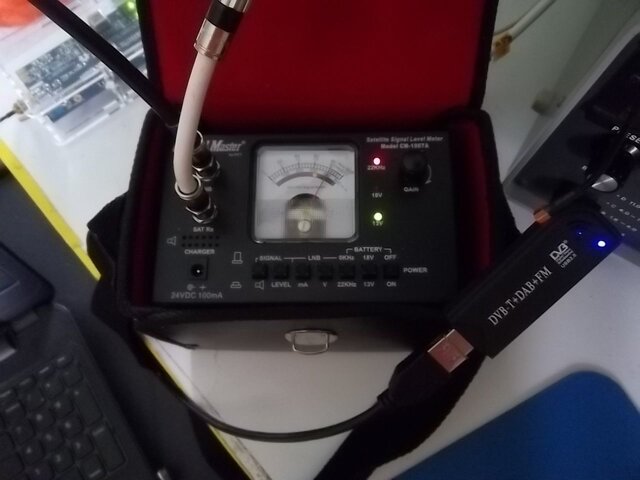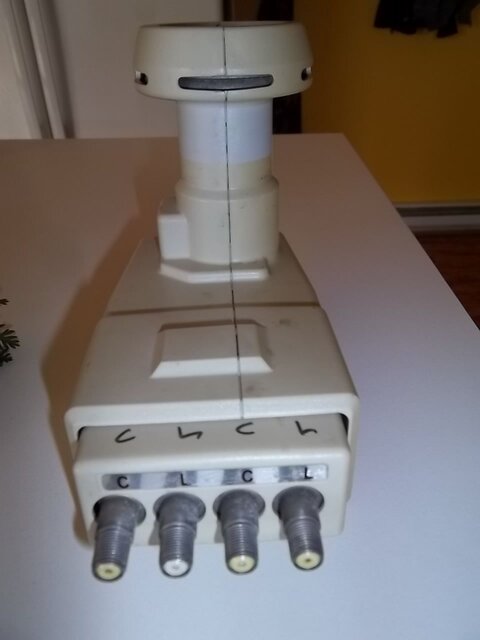Well if you want to keep costs down and the method simple, since you already have a system in place with your receiver for detecting signal levels, you pretty much have what you need with the exception of a compass. I still think your customers need at least a compass to determine where the satellite's azimuth is. For example, at my location (74.5W, 40.5N) Galaxy 19 @ 97W would have a compass heading (magnetic azimuth) of 225 degrees. So using the compass as a general guide that is where you'd point the dish. You'd also have to adjust the LNB skew also, then set the elevation as per a satellite lookup table. Now you'll move your dish in small increments up and down and left and right while watching (or listening) to your signal meter. You'd want to set the transponder parameters for your Outernet signal ahead of time too.
As for signal meters and satellite finders, they come in many different models and prices. I use the two below, they simply show a meter swing when you are pointing in the vicinity of a satellite. They won't tell you which satellite you are on though. The Radio Shack cost me about 30 bucks a few years ago, the Channel Master about 70. Much more sophisticated meters/finders are available which provide more information and other members of the forum can chime in on the virtues of their particular model. Currently I use, in conjunction with the Channel Master below, an 8Dtek Desired; this is a battery powered satellite receiver with a small screen for viewing programs from a satellite, and has a built in signal meter, and other bells and whistles which would be overkill for most of your customers. These meters sell for about $270. The lowest cost satellite meter, which I have used in the past and had served me very well, was the Satlink WS-6906. However that version did not receive MPEG IV. You can look on reputable vendor sites for these, check this forum for reviews of meters or just window shop on Ebay. At this time the WS-6906 which is an old model is selling for less than $100. Learning curves depend on the user though.
What others do when aiming a dish is to set up a regular satellite receiver and TV set right at the dish, this way they can actually see the programs from the satellite.
I will let those with more experience weigh in on this one, as my method is not necessarily the best approach. However it has served me well. When I started in this hobby 7 years ago I had no one to guide me, no experience whatsoever, learned from scratch, trial and error, and many hours at the dish. It was about three months before I found my first satellite!
PLEASE LOG IN TO GET RID OF THESE ADS!






